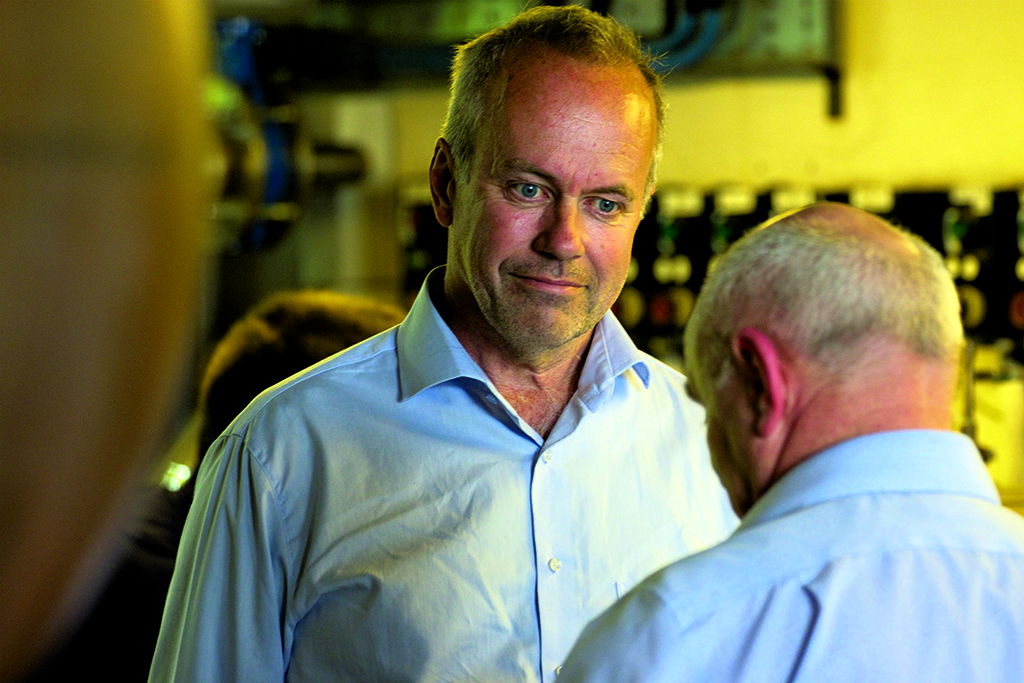Sweden has recently become one of Scotch’s ten top markets, and now also produces its own whiskies.
Invar Ronde’s Malt Whisky Yearbook is essential reading for anyone interested in malt whisky. It provides what it says on the cover: an annual update of ‘the facts, the people, the news, the stories’.
I have known Ingvar since 2007. When I met him recently I asked him about the success of whisky in Sweden, which is among the top ten markets for Scotch as well as having its own burgeoning whisky industry.
WHEN DID SWEDES BECOME KEEN ON WHISKY?
First, we have to realise that Sweden is traditionally part of the aquavit and vodka drinking cluster of European countries, although there is evidence of Scotch whisky being sold in Sweden from the early 19th century.
It wasn’t until the early 20th century that whisky became fashionable in the larger cities, where well-off people would enjoy it mixed with tonic and sometimes spiced up with lemon and sugar. In the 1960s, many Swedes were captivated by British TV shows where the characters would often pour a dram after coming home from work.
At the same time, Swedes started travelling abroad and often brought home a bottle of Chivas Regal. The love of Scotch grew and when the interest in Scotch single malt spread like a wildfire around the world, the Swedes were among the first to catch on. In Sweden, if you share the same interest – whether in cars, stamps or whisky – there is a tradition of organising clubs where you can get together with ike-minded people. This has helped to develop interest in whisky hugely. Today there are around 400 such clubs, with a total of 14,000 members around the country.
WHICH WHISKIES ARE MOST POPULAR?
When I travel in Scotland, I am always asked the same question: ‘What is it with you Swedes and peated whisky? You seem to be obsessed with it!’ It is true that many Swedes (and also people from the rest of Scandinavia) love the smoky whiskies – perhaps it has something to do with our northern climate, or our love of flavourful food like pickled herring.
But this love of peat is confined to the more experienced 10% of consumers. The majority of drinkers prefer a smooth whisky which is light in style: two of the most popular whiskies here are Canadian, while Irish whiskey is also very popular. In relation to Scotch, The Famous Grouse and Bell’s are the top blends, while Glen Grant and Laphroaig are the leading malts. Very contrasting flavours.
WHAT ABOUT SWEDISH WHISKY?
If we disregard an early attempt to produce whisky in the 1960s, Swedish whisky started with the foundation of Mackmyra Distillery in 1999. The idea was conceived when a group of friends from university got together on a ski trip and found that they shared an interest in whisky. So, rather than originating from a clear business model, it was the love of the product that ignited the process. This rather unusual way of starting a business can also be seen in several subsequent distillery foundations: enthusiasm and love of whisky came first, followed by the business model.

Ingvar Ronde
IS THERE A DISTINCT SWEDISH STYLE OF WHISKY?
Many people say there is, but to me Swedish whisky reminds me a lot of Scotch, and the production methods that are used mostly reflect those in Scotland. Having said that, you can detect certain unusual notes in some
whiskies that are probably derived from using Swedish oak, or adding plants like juniper or kelp to the peat fire when malting the barley.
HOW HAS SWEDISH WHISKY BEEN RECEIVED IN THE HOME MARKET? AND OVERSEAS?
To date, only four distilleries are releasing widely available whiskies – Mackmyra, Box, Smögen and Hven. With few exceptions, their products have been well received by enthusiasts, some of them selling out in seconds. On the other hand, the majority of Swedish consumers still seem to prefer the classic Scotch brands.
So far, Swedish whiskies have only become available in selected European, North American and Asian markets. We are still talking small volumes but the reaction from the experienced drinkers seems to indicate that they are recognising Swedish whisky as high quality spirit, although sometimes a bit youthful in style. We have to remember that the vast majority of Swedish whisky on the market is still around five years old.
WHAT OF THE FUTURE?
I’m sure there is a bright future for some Swedish distilleries, especially those run by people with a deep knowledge of whisky making. They all put quality first, and are not prepared to take any short cuts to achieve their goals. Others will, I’m afraid, realise that the capital needed to endure the first difficult three or four years of production exceeds any budget or plan they’ve made – a few have already closed.
But this is no different from whisky production in other countries.
The difficulties for most new whisky makers arise when they move from their home market and have to face a world with huge competition from well-established companies. The key to success here, apart from a top quality product, is distribution. If Swedish producers can ally with distributors who are able to make their products visible and available, then I think Swedish whisky will have a solid reputation on the world market in ten years time.
This feature was originally published in April 2017.
TAGS

